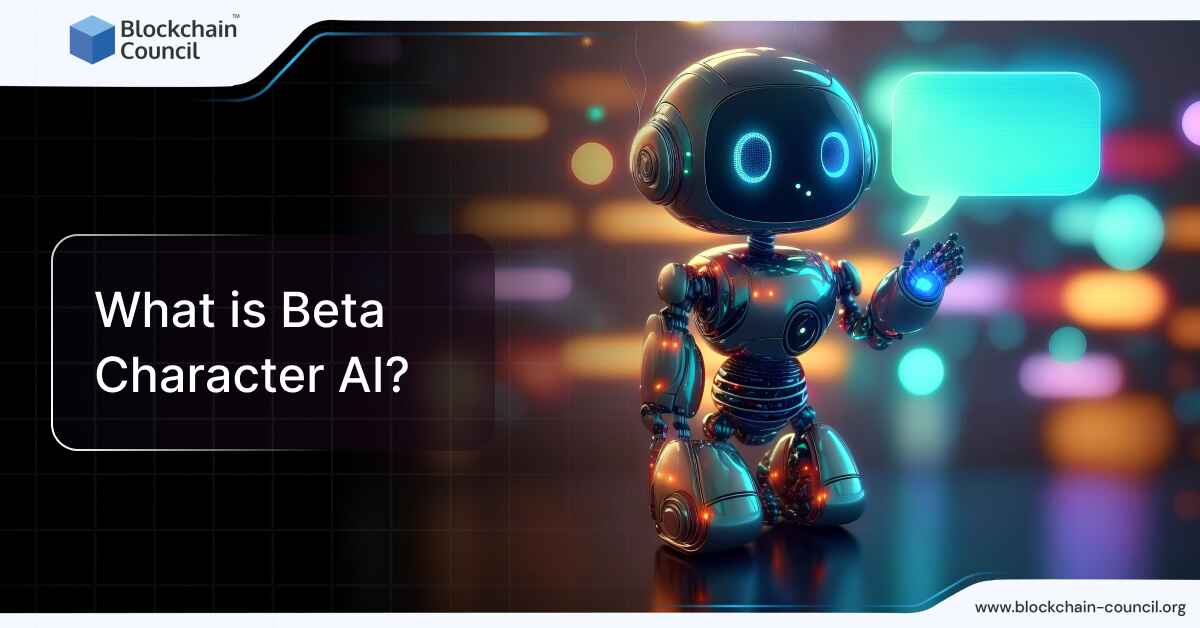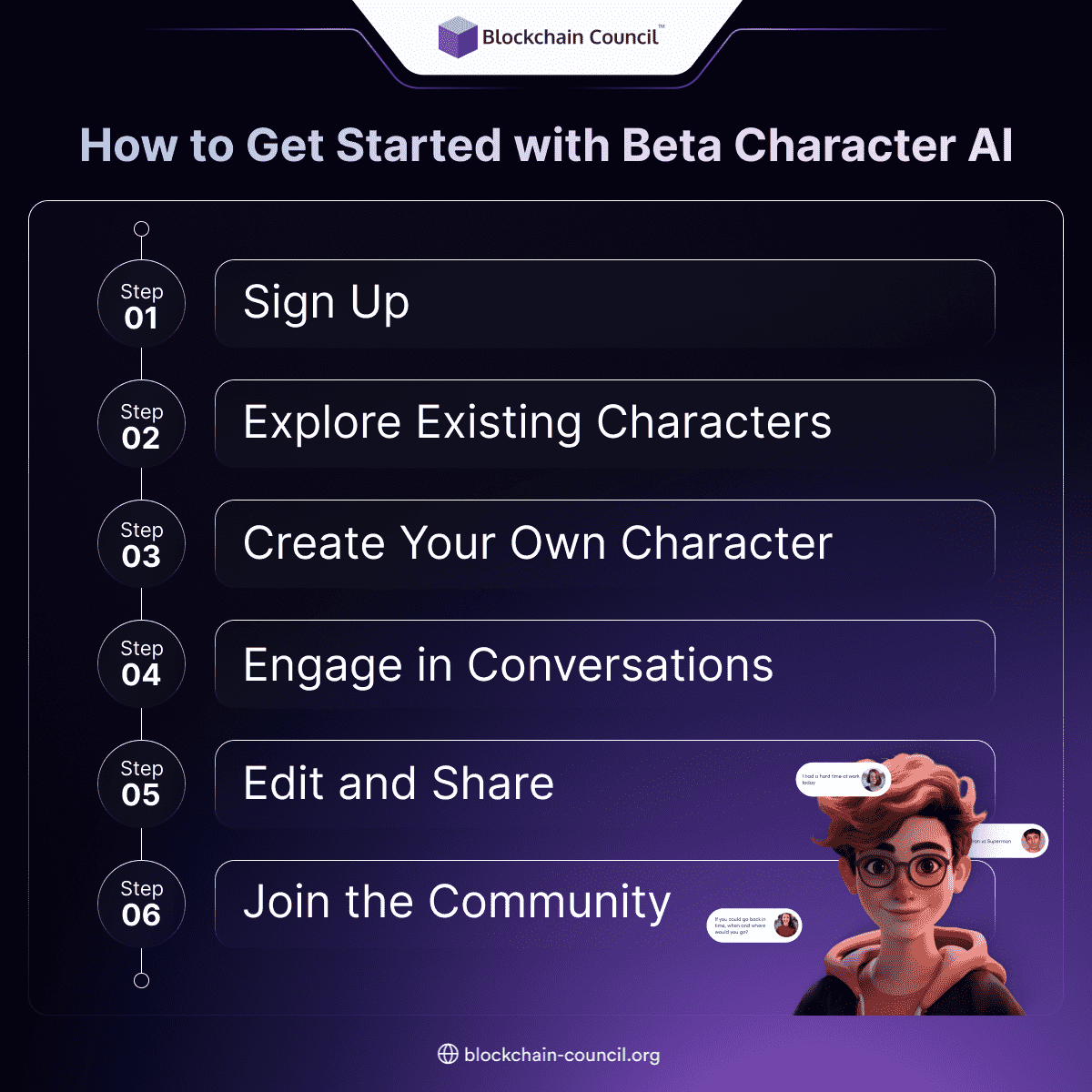
- Amber Smith
- September 12, 2024
What is Beta Character AI? Defined
Beta Character AI is an innovative web application that allows users to create and interact with their own AI characters. This platform is powered by advanced neural language models, enabling the generation of realistic and natural dialogues. It represents a leap forward in conversational AI, offering users a unique opportunity to explore the capabilities of artificial intelligence in a creative and engaging way. Developed by Noam Shazeer and Daniel De Freitas, who previously worked on Google’s LaMDA project, Beta Character AI was launched in September 2022. Since its introduction, it has rapidly gained popularity, with thousands of users creating over 100,000 characters and chats.
Features of Beta Character AI
Beta Character AI stands out due to its distinctive features that facilitate easy and enjoyable use:
- Creation and Customization: Users can craft characters by defining their names, descriptions, personalities, backgrounds, genres, franchises, and more. This level of customization allows for the creation of deeply personalized and varied AI characters.
- Interactive Conversations: The platform offers a text box or speech bubble interface for users to engage in conversations with their characters, making the interactions more dynamic and immersive.
- Community Engagement: It encourages community interaction by allowing users to share their characters or chats with others, rate and comment on creations, and join user groups on social media platforms like Discord, Reddit, Twitter, Facebook, and Instagram.
- Learning and Creativity: For individuals interested in writing, language learning, or simply exploring new ideas, Beta Character AI offers tools to improve writing skills, practice language learning, and brainstorm creative scenarios..
Also Read: What is Character AI?
How to use Beta Character AI?
Getting started with Beta Character AI involves a few simple steps that can quickly bring your creative ideas to life through conversational AI. Here’s a step-by-step guide to help you dive into the world of Beta Character AI:
Step 1: Sign Up
Visit the Beta Character AI website and create a free account. This is your first step into creating and interacting with your AI characters.
Step 2: Explore Existing Characters
Take some time to browse through characters and chats created by others. This can provide inspiration and insight into what’s possible with the platform.
Step 3: Create Your Own Character
Use the “Create” button to start crafting your character. You’ll fill out a form detailing your character’s name, description, personality, background, genre, franchise, and other relevant details to bring your character to life.
Step 4: Engage in Conversations
After creating your character, you can begin chatting using a text box or speech bubble interface. This interaction allows for dynamic and immersive conversations.
Step 5: Edit and Share
You have the flexibility to edit your character or chat at any time. Moreover, you can share your creations with the Beta Character AI community or on social media platforms.
Step 6: Join the Community
Engaging with the Beta Character AI community on platforms like Discord, Reddit, Twitter, Facebook, and Instagram allows you to interact with other users and exchange ideas.
How Does Beta Character AI Work?
Beta Character AI operates on the foundation of neural language models. These sophisticated computer programs learn from vast amounts of text data, enabling them to generate new text that mimics human-like dialogues. The process involves several key components:
- Neural Language Models: The core technology behind Beta Character AI, which allows for the generation of realistic dialogues based on extensive data analysis.
- User Input: The platform takes into account the detailed settings you provide for your character, including their name, personality, background, and more, to ensure that responses are tailored and authentic.
- Contextual Conversations: The AI considers the context of conversations, including previous exchanges, to produce responses that are coherent and relevant to the ongoing dialogue.
Also Read: How Does Character AI Work?
Challenges and Limitations
- System Updates: Updates may temporarily affect character behaviors. Feedback helps in quick adaptation.
- Memory Limitations: Characters may forget earlier parts of conversations.
- Handling Rudeness: Challenges in managing rudeness, anger, and swearing in interactions.
- Factuality Issues: Characters may present false information as facts.
- Visual Consistency: Difficulty in maintaining consistent visuals for characters or scenes across interactions.
- Quality of Visual Details: Issues with the accuracy of complex visual details like fingers or facial expressions.
- Pop Culture Knowledge: Limitations in accurately generating images of well-known characters from movies or TV shows.
- Contextual Understanding: Struggles with complex conversations or nuances, leading to irrelevant responses.
- Consistent Personality: Challenges in maintaining a consistent personality across various interactions.
- Emotional Comprehension: The AI’s lack of genuine emotional understanding may lead to inappropriate responses in sensitive situations.
- Bias and Stereotyping: Inherent biases in training data can lead to biased or stereotypical responses.
The Role of AI in Virtual Character Development
The journey of artificial intelligence (AI) in virtual character development has been both long and transformative, reshaping how characters are created, understood, and interacted with in various media and platforms. This journey spans from the early philosophical ideas of artificial beings to the advanced AI-driven characters in today’s digital world.
Early Beginnings and Theoretical Foundations
The concept of creating artificial beings has roots in ancient and medieval times. Around 1500, Paracelsus claimed to have created an artificial man using alchemy, while in the late 16th century, the legend of the Golem, a clay figure brought to life, emerged from Prague. These early tales reflect humanity’s long-standing fascination with artificial life and set a foundational stage for the theoretical exploration of AI.
In the 17th and 18th centuries, notable philosophers and mathematicians laid the groundwork for AI by developing theories of knowledge, cognition, and logic. Figures like Blaise Pascal and Gottfried Wilhelm Leibniz made significant contributions by inventing mechanical calculators and conceptualizing universal reasoning systems, respectively. These early mechanical inventions and theoretical models provided the initial steps towards modern AI, hinting at the potential for machines to perform tasks requiring intelligence.
The 20th Century: From Conceptualization to Realization
The 20th century marked the transition from theoretical AI to practical applications and significant technological developments. The mid-20th century saw the birth of the computer age, laying the technological foundation for AI research. In the 1950s, the term “artificial intelligence” was coined, signaling the formal beginning of AI as a field of study. This period also saw the development of early AI programs, such as ELIZA, which could simulate conversation, and Shakey, a robot that combined mobility, perception, and problem-solving.
The latter half of the 20th century was characterized by the rise and fall of AI research enthusiasm, known as the “AI winters,” due to unrealistic expectations and subsequent disappointments. Despite these challenges, the period also witnessed significant milestones, such as the development of expert systems in the 1980s, which could mimic the decision-making of human experts, and the emergence of machine learning and natural language processing (NLP) technologies in the 1990s.
The 21st Century: AI and Character Development
The 21st century has seen rapid advancements in AI, driven by the explosion of data, advancements in machine learning algorithms, and increases in computational power. Key developments include the rise of deep learning, which has enabled more sophisticated and realistic AI characters, and generative AI, which can create new content, including dialogue and personality traits for AI-driven characters.
In character development, these AI technologies have been applied to create more complex, engaging, and believable characters in video games, virtual reality, and interactive media. AI-driven characters can now learn from interactions with users, adapt their behaviors, and generate realistic responses, making the user experience more immersive and personalized.
Conclusion
Beta Character AI represents a significant leap forward in the field of artificial intelligence and chatbots. By allowing users to create and interact with AI-driven characters, it opens up new possibilities for entertainment, creative writing, and even personal assistance. Its underlying technology, combining deep learning with large language models, offers a level of interaction that closely mimics human conversation, making it a versatile tool for both developers and casual users alike. As the platform continues to evolve, it promises to bring even more innovative features and applications, further blurring the lines between virtual and reality. Whether for fun, learning, or creative exploration, Beta Character AI offers a unique and engaging way to experience the potential of AI technology.
FAQ’s
What is Beta Character AI?
- Beta Character AI is an innovative web application developed by former Google AI developers.
- It allows users to create and interact with their own AI characters.
- Users can customize their characters’ names, personalities, backgrounds, genres, and more.
- The platform focuses on offering personalized and interactive experiences through text-based conversations.
How do I get started with Beta Character AI?
- Sign up for a free account on the Beta Character AI website.
- Explore existing characters and chats created by others for inspiration.
- Use the “Create” button to craft your own character by filling out a detailed form.
- Engage in conversations with your character using the text box or speech bubble interface provided.
What are the unique features of Beta Character AI?
- Extensive creation and customization options for users to define their characters.
- Interactive conversations through text-based interfaces enhance user engagement.
- Community engagement features allow users to share, rate, and comment on creations.
- Tools for learning and creativity, including writing skill improvement and language practice.
How does Beta Character AI work?
- It operates on neural language models, generating realistic dialogues based on user input.
- The platform considers detailed settings provided by users to tailor responses to each character.
- Contextual conversations are facilitated, ensuring coherence and relevance in interactions.
- Challenges such as system updates, memory limitations, and handling rudeness are addressed to enhance user experience.






































































 Guides
Guides News
News Blockchain
Blockchain Cryptocurrency
& Digital Assets
Cryptocurrency
& Digital Assets Web3
Web3 Metaverse & NFTs
Metaverse & NFTs
